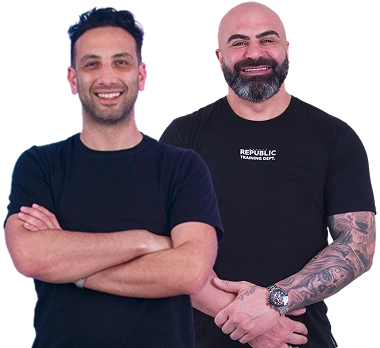For many digital marketers, it can take hours to create a perfect ad set for reaching your Facebook advertising goals. The ad copy is convincing, intriguing, and aligned with your campaign objectives. You’ve got a compelling call-to-action set to funnel interested leads straight to your perfectly crafted landing page. And even better, your ad passed review and met the 20% text rule. Once your Facebook ad campaign gets approved, and you start to run ads, it’s time to celebrate. But not so fast.
You notice one or two of your ads aren’t performing. It’s not that they aren’t getting the desired amount of conversions. They aren’t getting impressions at all! If your target audience never sees your ad, it won’t reach its goals or do much for the growth of your business. Below are the top reasons why your Facebook ads aren’t getting any impressions, and what you can do about it.
Facebook Ads: Survival of the Fittest
In digital marketing, less is sometimes more, and social media advertising is no different. Running multiple ad sets from the Facebook ad manager isn’t necessarily a good thing. The way Facebook ad campaigns are structured allows you to split test an ad set effectively, so running several at once won’t necessarily help your marketing objectives. With one ad set, one or several of the ads will get most of the action. This allows marketers to figure out which ad copy, images, and ad formats are most resonating with their target audience. It also allows you to test and tweak your targeting options. But why would several of your ads within an ad set not be getting any impressions? Here’s what could be happening:
- Facebook begins to display your ads to Facebook users in your custom audience or target audience. Displays, or impressions, occur at a roughly equal rate.
- Once your ad starts to get clicks, the algorithm notices the viewers’ interest.
- The ad that’s getting the clicks will start to display more and get more impressions. Facebook’s programming decides that this is the ad that people are most interested in, so they begin to show it to more people across the social network. It might not seem like it, but Facebook is trying to help your advertising efforts by increasing impressions with the ad that’s garnering the most attention.
- Unfortunately, the other ads in your set are mostly ignored by the Facebook machine. The strongest, or fittest ad become the only ad to get displayed.
- Behind the scenes, Facebook is influencing and optimising other parts of the campaign and calculating a relevance score. For example, if your ad set was supposed to show up on both desktop and mobile devices, the ads will be shown in both places. But once an ad in a specific place starts getting clicks, the ad will start getting impressions in that place. Mobile ad getting the first set of clicks? Then the desktop version of the ad won’t get shown. Another thing that can happen is if the ad gets clicks from people in a certain demographic group. Other groups may not get impressions of the ad.
- Sooner or later, you only have one ad that’s getting seen by people on mobile, or desktop, or only getting impressions with people who meet a specific set of criteria.
That’s how the process of ads not getting impressions starts. The biggest problem for digital marketers is that Facebook starts to optimise the campaign behind the scenes before there is any clear evidence that a particular ad format, destination, or audience sector is the “winning” ad formula for the ad set. When it comes down to it, 200 impressions and five clicks are not enough data to truly determine if the ad doesn’t work for your custom audience. But unfortunately, ads not getting impressions happen a lot of Facebook, and it can be super frustrating. One way to stop this from happening is to run only two different ads in a structured split test at once.
One caveat though: not all campaigns get optimised during this process. In a minority of cases, Facebook will run ads equally to a custom audience. If that happens, marketers will need to determine which ad is most effective and pause the other ads to protect their spending limit, and get the lowest cost-per-click. This is one of the reasons why it’s essential to pay attention to the data on how the ads are performing. Data on Facebook ad performance can be found in the Ads Manager and also under the “Reporting” tab. It’s also a good idea to wait at least 24 hours before checking the data to determine the best ad.
Testing the ad copy and creative will help determine which ad is best for your campaign objectives, too. Even something as small as changing the call-to-action button, imagery, or ad copy can make a major difference in the conversion rate and cost of the ad. Again, waiting 24 hours is ideal before deciding which ad version is best.
What’s a common mistake with Facebook ads impressions and conversions?
A common reason for why digital marketing campaigns can fail on Facebook is because the ads aren’t correctly targeted. Marketers must create a custom audience that is an accurate depiction of their ideal customer and the people they want to reach on Facebook. Every day, more than a billion people access the social media platform. If an ad isn’t getting impressions and conversions, it’s inaccurate to say that a business’s target audience members aren’t hanging out on Facebook.
A significant benefit to using Facebook for advertising is that the platform allows businesses to target their ads to a particular audience. Ideally, that audience member will click on the ad and go to your optimised landing page, netting you a conversion. But if ads aren’t correctly targeted, they will be displayed to people on the platform who aren’t interested in your products and services. It doesn’t matter if the copy is on-point and the images are eye-catching. You can’t say the right thing to the wrong person. So if your ads aren’t getting the impressions you need, poor targeting might be to blame. Think about it this way:
You see a very intriguing and entertaining video ad for women’s athletic shoes on Facebook. But you’re not a woman, and you’re not athletic. There are also no athletic women in your household. The content of the ad won’t change your mind – you’re not interested in purchasing women’s athletic shoes no matter what.
Another common problem with impressions and conversions is the issue of “curiosity clicks.” Take the athletic shoe scenario. If someone who is not interested in those products still clicks on the ad because they are entertained and therefore, curious about the ad, it will result in an impression and curiosity click. This is a nightmare scenario for marketers. Facebook will see the clicks on the ad and correlate it with a positive conversion. Even though the conversion tracking pixel shows a bounce rate on your website, your poorly targeted ad is going to get shown around the social network, putting pressure on your spending limit without giving you the sales you want.
How can you target your Facebook ads effectively?
Facebook advertisers have to know who their target customer is – their demographic information, interests, and behaviours on Facebook. With that information, marketers need to build a robust and accurate custom audience profile. When you know the interests and characteristics of your ideal customer, you’re going to have the best chance of creating and launching ads that get impressions, clicks, conversions, and sales. Your ads will display to the right people at the right time. So, take your time to understand your buyer persona fully.
We Can Help
Are you unsure of how to target your ads, and are sick of running Facebook ad campaigns that don’t get you the impressions and conversions you want? At Australian Internet Advertising, our digital marketing experts can make Facebook advertising work for your business. Contact us today to get started with a Facebook ad campaign that will meet your marketing objectives and grow your business online.




